

Soap Boat Experiment
One day, my 4-year-old daughter asked, “What is science?”
“Well, remember you always ask me Why — ? Why is the sky blue ? Why is sunset orange ? Why are bubbles round ?” I answered.
“ Science helps us find out answers to these whys!”
My daughter’s question came at the perfect time when I received the new book Ada Twist, Scientist * whose creator wrote the New York Times bestselling picture books Rosie Revere, Engineer and Iggy Peck, Architect.
My four year-old couldn’t read yet, but she was intrigued when I told her about this book.
Like her, scientist Ada is always curious and wants to know why to everything.
She likes to conduct scientific experiments and is not afraid of failure.
She also asks lots of questions and searches for the answers.
What better way to illustrate the spirit of Ada Twist than doing a science experiment ourselves to explore, discover and learn?
Soap-Powered Boat
A few weeks ago, we did an experiment using pepper, water and liquid soap .
After sprinkling some pepper in the water, we were able to use liquid soap to move and scatter the pepper.
We wondered if liquid soap could do the same thing to a boat, making it move across the water.
Can soap power a boat?

Soap Powered Boat
Today, we are building a soap-powered boat to learn about an important water property.
- a sheet of clear PVC plastic or styrofoam (I used a clear PVC gift box)
- (Optional) color paper and a stick
- liquid dish soap
- a wide container or a tray
- a dropper or a drinking straw
- adult supervision
Instructions
- Cut the sheet of plastic or styrofoam into the shape of a boat.
- At the end of the boat, cut a small notch.

- Fill the container or the tray with a thin layer of water.
- Place the boat in the water.
- Using a dropper or a drinking straw, put a drop of liquid soap into the notch at the end of the boat and watch your boat move forward!
Did you try this project?
Follow us on Pinterest and share a photo!
Do you have a hypothesis on why the boat moves?
After the boat has stopped, repeat the experiment a few more times in the same pool of water and see what happens.
Are you able to prove or disprove your hypothesis?
Soap powered boat explanation
If your boat is lightweight (not too many decorations), it should float and move forward quickly when you put the first drop of soap into the notch.
The boat moves because the soap alters the water’s surface tension .
Water molecules (the tiny little pieces of water) tend to stick to one another (cohesion).
On the surface of the water , water molecules are more attracted to other water molecules than to the air resulting in surface tension .
In this experiment, the “boat” can float on water due to this surface tension.
Water has high surface tension, which means the molecules are pulling each other on the surface very strongly.
Soap is a surfactant that breaks down water’s surface tension by giving water molecules something else to be attracted to (soap molecules).
When a drop of soap is placed in the notch, the surface tension of the water in that small area is reduced.
The high surface tension in the rest of the surface of the water pulls the water away from the area with low surface tension dragging the boat with it.
After repeating the experiment several times, the boat stops moving despite adding more soap.
By then, the surface tension in the entire pool of water has been broken.
When the surface tension difference between the front and the back of the boat disappears, the water will not be pulled and the boat will not move.
The Book Ada Twist, Scientist
Ada Twist, Scientist is an amazing picture book for children. Ada is a budding scientist who asks Whys, proposes hypotheses, overcomes failure and looks for answers. Ada Twist, Scientist will be released on September 6th, 2016.

More Experiments
For more Ada Twist, Scientist experiments, visit http://www.abramsbooks.com/adatwist/ .
Questacon, The National Science And Technology Center
* My daughter received a free copy of Ada Twist, Scientist and a signed print.
Similar Posts

DIY Paddle Boat For Kids (Video)
Water science experiment is always a hit for the kids. One of the coolest summer activities for kids is building…

Why Is Water Attracted To A Charged Balloon
Here is a simple physics experiment using a property called static electricity. Every object is made up of small particles…

Balloon Hovercraft Science Experiment
Friction is the force created when two objects move across each other to oppose the movement. An object gliding on…

Traveling Water Experiment
Have you ever wondered why water sticks to your skin? When you jump into a ball pool and come out,…

Water Refraction Experiment (Video)
Have you ever noticed that things look strange when you view them through a glass of water? It’s not just…

How To Make A Rainbow – Simple Science Experiments
Making a rainbow is a fun and educational science experiment that can be easily done at home or in the…
Get Your ALL ACCESS Shop Pass here →
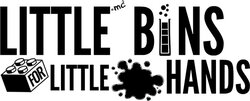
Soap Powered Boat Experiment
Today, we’re diving into a captivating experiment that introduces the concept of surface tension: the soap powered boat experiment . This hands-on science activity allows kids to observe firsthand how soap influences the movement of a small boat on the water’s surface. Plus, it’s a great way for kids of all ages to play with science.
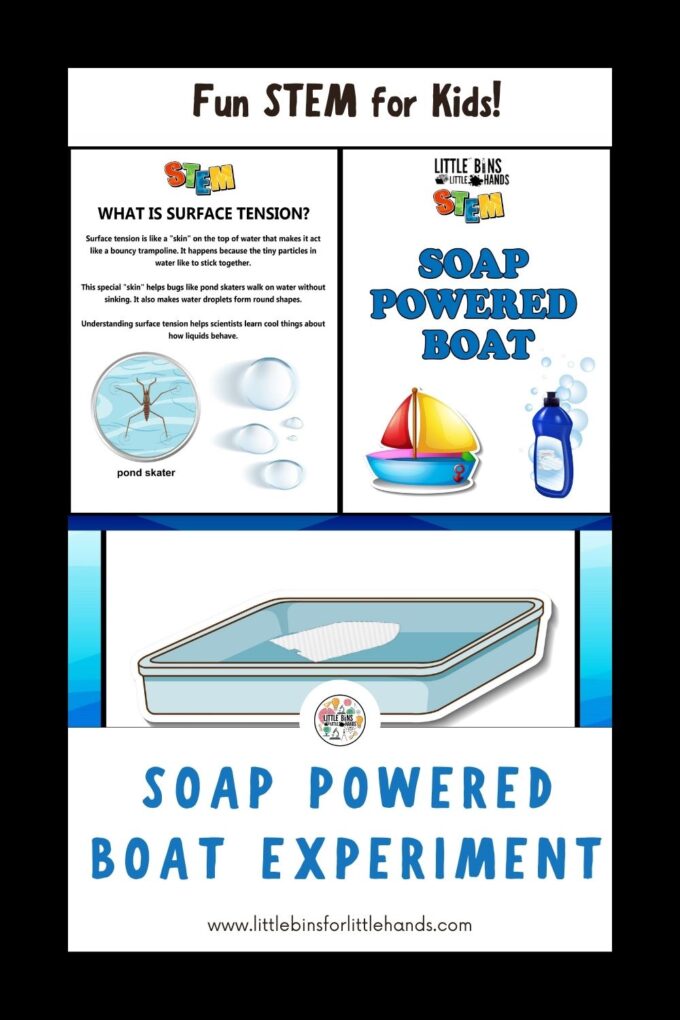
Fun Surface Tension Experiments
Exploring surface tension through hands-on experiments offers an engaging way for kids to discover the fascinating properties of liquids. From observing the mesmerizing movement of a soap-powered boat to experimenting with other everyday materials, these activities not only spark curiosity but also lay the foundation for understanding fundamental scientific concepts.
Find more surface tension experiments here.
Watch the Video:
How to set up soap powered boat experiment.
Setting up the Soap-Powered Boat Experiment is straightforward and requires only a few materials. Here’s a step-by-step guide to get you started:
Materials Needed:
- A shallow container or basin large enough to float the boat and hold water
- Boat printable
- A small, lightweight boat (can be made of materials such as plastic, foam, or balsa wood)
- Liquid soap or detergent
- Optional: stopwatch or timer for measuring speed
- Printable science journal sheets
Instructions:
Follow along with the video above, or join us in the club for a printable version of the video!
Step 1: Prepare the Container . Fill the shallow container or basin with enough water to float the boat without touching the bottom of the container.
Step 2: Design and Prepare the Boat . Design a small, lightweight, and buoyant boat. You can construct the boat using foam board, plastic bottles, or lightweight wood. Make sure it floats!
Step 3: Add Soap . Add a small amount of liquid soap or detergent to the water in the container. The soap should be enough to change surface tension noticeably but not so much that it becomes too sudsy.
Step 4: Test the Boat . Gently place the boat on the surface of the water and observe how it floats and moves without any external force.
Step 5: Activate the Boat: Add a drop of dish soap to the water’s surface near the back of the boat to activate the soap-powered propulsion.
Step 6: Observe and Measure Watch as the soap disrupts the water’s surface tension and propels the boat forward. If desired, use a stopwatch or timer to measure the time the boat travels a certain distance.
Step 7: Experiment and Adjust. Experiment with different variables, such as the amount of soap used, the design of the boat, and the water conditions, to see how they affect the boat’s speed and movement. Take note of any patterns or observations.
Step 8: Record Your Findings Record your observations, measurements, and any adjustments made during the experiment.
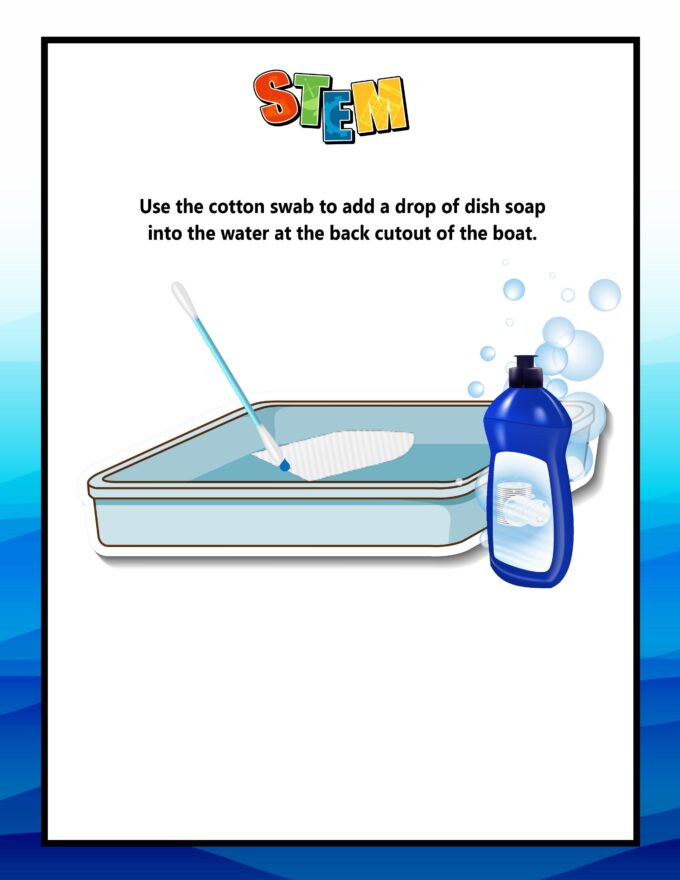
Soap Powered Boat Science
The Soap-Powered Boat Experiment demonstrates the fundamental principles of surface tension and propulsion. When added to water, soap disrupts the cohesive forces at the water’s surface, reducing surface tension. This disruption creates a gradient in surface tension, with higher tension at the water’s surface and lower tension beneath.
Gradient: A gradient in surface tension means that the strength of the “skin” on the surface of a liquid isn’t the same everywhere. It changes across the surface. This can happen when adding substances like soap. It can weaken the surface tension in some areas and strengthen it in others.
When the soap boat is placed on the water, the higher surface tension at the front of the boat pushes it forward, while the lower tension at the back allows it to move smoothly through the water. This experiment illustrates how a common material like soap can profoundly affect the behavior of liquids.
Check out more ways to explore surface tension here!
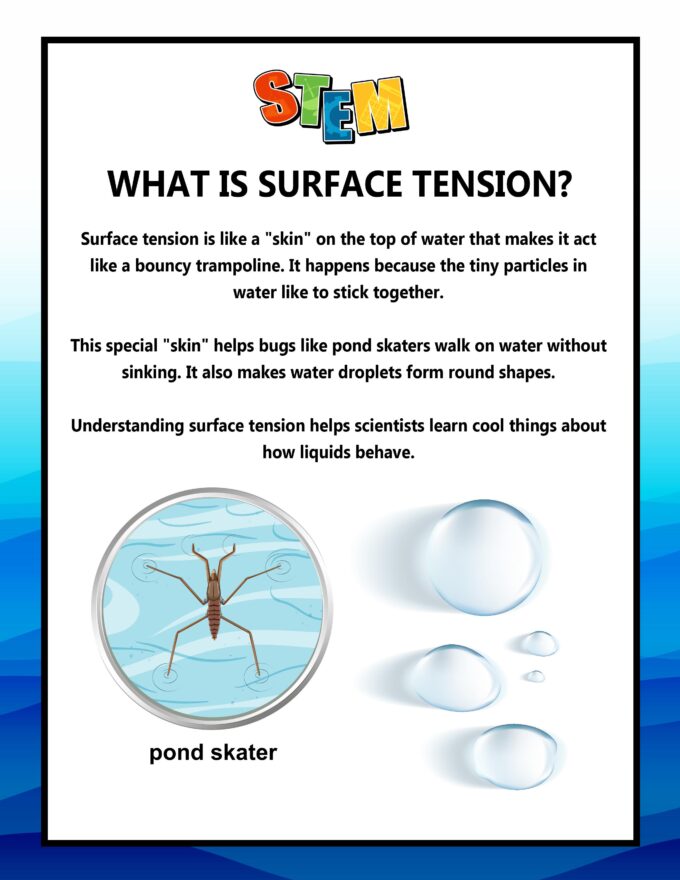
Add the Scientific Method
Incorporating the scientific method into the Soap-Powered Boat Experiment enhances the process of inquiry and discovery.
Science projects are an excellent tool for older kids to demonstrate their science knowledge. They can be used in various environments, including classrooms and groups.
Kids can take everything they have learned about using the scientific method , stating a hypothesis, choosing variables , making observations , and analyzing and presenting data.
Want to turn one of these experiments into an excellent science fair project? Check out these helpful resources.
- Science Project Tips From A Teacher
- Science Fair Board Ideas
- Easy Science Fair Projects
More Science Experiments for Kids
Here are similar experiments that explore different aspects of surface tension , buoyancy , and fluid dynamics:
- Alka Seltzer Boat Experiment
- Walking Water Experiment
- Floating Paperclip Experiment
- Dancing Raisins Experiment
- Capillary Action Experiments
- Buoyancy: Penny Boat Challenge
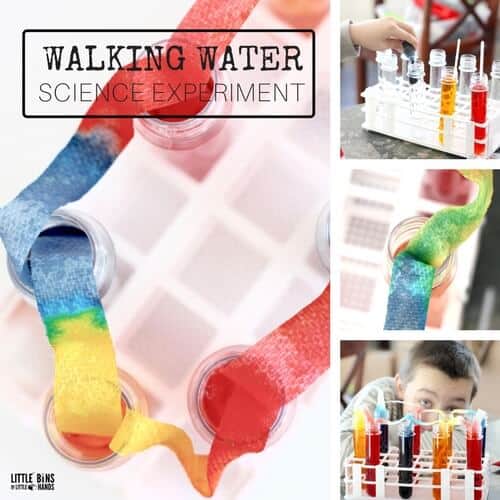
Printable Science Projects For Kids
If you’re looking to grab all of our printable science projects in one convenient place plus exclusive worksheets and bonuses like a STEAM Project pack, our Science Project Pack is what you need! Over 300+ Pages!
- 90+ classic science activities with journal pages, supply lists, set up and process, and science information. NEW! Activity-specific observation pages!
- Best science practices posters and our original science method process folders for extra alternatives!
- Be a Collector activities pack introduces kids to the world of making collections through the eyes of a scientist. What will they collect first?
- Know the Words Science vocabulary pack includes flashcards, crosswords, and word searches that illuminate keywords in the experiments!
- My science journal writing prompts explore what it means to be a scientist!!
- Bonus STEAM Project Pack: Art meets science with doable projects!
- Bonus Quick Grab Packs for Biology, Earth Science, Chemistry, and Physics
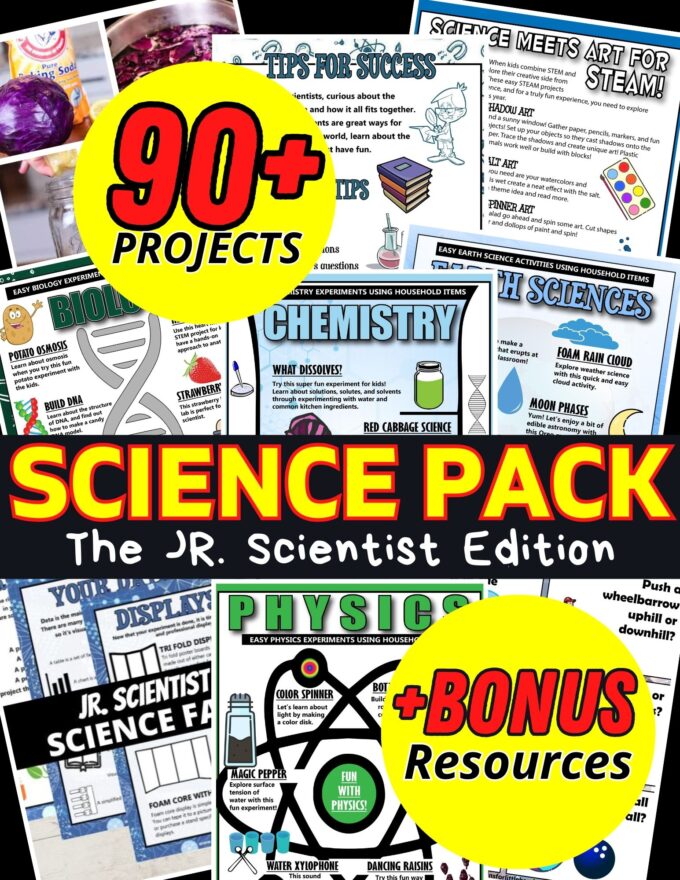
Subscribe to receive a free 5-Day STEM Challenge Guide
~ projects to try now ~.
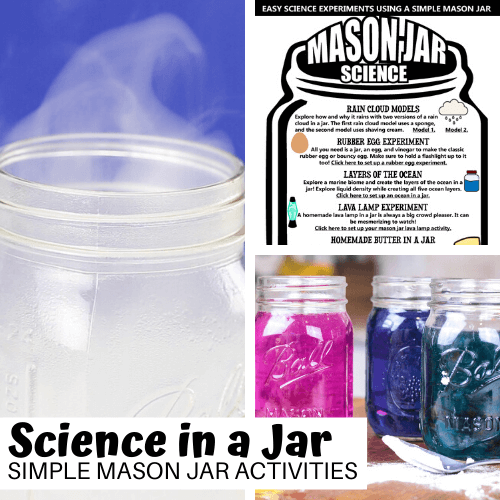
- Login | Register
Have 10% off on us on your first purchase - Use code NOW10
Free shipping for orders over $100
Available for dispatch within 2 days
Free gift with purchase of over $100
Check out with Paypal and Afterpay
Soap powered boat
Follow FizzicsEd 150 Science Experiments:
You will need:
- Cardboard or balsa wood (laminated paper or a thin plastic chopping board works well too)
- Tub of water, scissors and glue
- Detergent or soap
- This image to print out

- Instruction

Print, cut out and glue the picture here onto some cardboard, or copy it onto your piece of balsa wood.
We’ve found that thin plastic such as a chopping board works well too!

Cut out the boat picture, along the black lines, to make your small boat.

Place the boat into a tub of water.

Place a drop of detergent, or soap, onto the ‘target’ of the boat.
Why does the boat travel forwards?

Get the Unit of Work on Water Science here!
- Explore the water cycle
- Learn about cohesion, adhesion & capillary action
- From water currents to floatation, join us to explore water science!
Includes cross-curricular teaching ideas, student quizzes, a sample marking rubric, scope & sequences & more
School science visits since 2004!
– Curriculum-linked & award-winning incursions.
– Over 40 primary & high school programs to choose from.
– Designed by experienced educators.
– Over 2 million students reached.
– Face to face incursions & online programs available.
– Early learning centre visits too!

Online courses for teachers & parents
– Help students learn how science really works
Why Does This Happen?
The movement of the soap powered boat can be explained by a combination of three principles. All liquids have surface tension along the surface of a liquid, caused by intermolecular forces within the liquid pulling liquid molecules together. Because of surface tension, liquid surfaces act like a kind of ‘skin’, able to support small insects and materials on their surface.
Isaac Newton’s third law of motion says for every action there is an equal and opposite reaction. The movement of the detergent provides a ‘pushing force’ backward into the water surface as the detergent molecules spread out, sending the boat forward… i.e. an equal and opposite motion.
The Marangoni effect is also acting upon the boat. This effect describes how a liquid with a high surface tension pulls more strongly on the surrounding liquid than a liquid with low surface tension. If you change the surface tension of some parts of the liquid you introduce a difference in surface tension or ‘gradient’. A presence of a surface tension gradient will cause the liquid to flow from areas of low surface tension to high surface tension. Your detergent molecules reduced the water surface tension behind the boat, causing the water (and the boat) to move forwards.
To repeat the experiment you may have to get clean water without detergent so that the surface tension is equal throughout the water.
Variables to test
More on variables here
- Try different shapes of boats and amounts of detergent, does it make a difference?
- What happens if you use soap instead of detergent?

Learn more!
- Teaching about Newton’s laws? Check out the Forces, Friction & Movement workshop!
Get in touch with FizzicsEd to find out how we can work with your class.
Working with Water
Years K to 2
Maximum 30 students
School workshop (NSW & VIC)
60 or 90 minutes
Online Class Available

Rubber band powered boat
Stem full day accelerator - primary.
Designed from real classroom experiences, this modular day helps you create consistently effective science learning that directly address the new curriculum with easily accessible and cost-effective materials.

Be Amazing! How to teach science, the way primary kids love.
Love science subscribe.
Receive more lesson plans and fun science ideas.
SCIENCE PARTIES
Calendar of events.

HIGH SCHOOL Science@Home 4-Week Membership 12PM: March 2024
Price: $50 - $900

PRIMARY Science@Home 4-Week Membership 2PM: March 2024

Light and Colour Online Workshop, Jan 18 PM
Light and colour online workshop, jan 18 am.

Lego Robotics, Sydney Olympic Park Jan 2024

Creative Coding, Sydney Olympic Park Jan 2024


Creative Coding, Sydney Olympic Park July 11 2023
Price: $100

Fizzics Education STEAM Day: Robots vs Dinosaurs, Lalor, Apr 14
Price: $45 - $50
Creative Coding, Sydney Olympic Park April 14 2023
Science@home after school 4-week membership: march 2023.
Price: $40 - $1200
4 thoughts on “ Soap powered boat ”
very clear and good article easy to understand. Thank you
Where is the picture to cut out?
Thanks for the heads up! The link above has been fixed. You can get the image here . Thanks for trying this experiment!
Leave a Reply Cancel reply
Your email address will not be published. Required fields are marked *
School Comments View All
Fizzics Education curated a thoughtful and hands-on experience for the children, incorporating practical, skill-based learning activities and followed by a science presentation at the end of the event involving liquid nitrogen. This was delivered safely and effectively, capturing both the children and the parents for the duration of the presentation.
Fizzics Education ran a show today at our school and it was wonderful. He was a great facilitator and the show was age appropriate and well done.
I just wanted to pass on how much the staff and students really enjoyed it and how perfect it was to launch our science week activities. The students were enthralled, educated and entertained – a perfect trifecta!
Thanks so much for presenting at our school on Monday. Our students enjoyed the show.
Fizzics Education Awards

- Free Resources
Free Chemistry Book! Sign-up to our newsletter and receive a free book!
Female Accountant Apply Here
Physics teacher apply here, science teacher apply here, view all vacancies, join our team apply here.
Send us an Email at [email protected]
Phone Number: 1300 856 828
Email: [email protected], address: unit 10/55 fourth ave blacktown, nsw 2148, australia.
- Privacy & Legal Policy
- Copyright Notice
- Terms of Trade
- Cookie Policy
Copyright 2024 Fizzics Education . All rights reserved.
This website uses cookies to improve user experience. By using our website you consent to all cookies in accordance with our Cookie Policy .
Get more science with our newsletter!
Thank you for looking to subscribing to our newsletter 🙂 Through this service you’ll be first to know about the newest free experiments, science news and special offers.
PLUS: Get a free Kitchen Chemistry Booklet with >20 experiments, how to use variables plus a handy template!
Click the image to preview
Please select an ebook!

Kids Edition

Parent Edition

Teacher Edition
Please fill out the details below and an email will be sent to you. Once you get that just click on the link to confirm your subscription and you're all done!
First Name *
Last Name *
Email Address *
Phone Number
Subscribe as a Teacher?
Preschool Teacher
Primary Teacher
High School Teacher
Vacation Care or Library
Subscribe as a Parent?
Enquiry Form
Extra things, products that might interest you.

Rainbow Fireworks Glasses

Magic Crystal Tree Science Kit

Helicopter Spiral Top

Fly Back Glider
- Grade Level
Where are you located?
- New South Wales
- Australian Capital Territory
Location not listed?
Which grade level are you teaching.
- Whole School
- Teacher Professional Development
- Special School Events
- Early Childhood
- Kindergarten
Which broad syllabus outcome you want to teach?
What is the age range of the attendee?
- Age 5 and up
- Age 6 and up
- Age 7 and up
- Age 8 and up
- Age 9 and up
- Age 10 and up
- Age 11 and up
- Age 12 and up
General Enquiry Form
Check if you require a live online class.
Subscribe for special offers & receive free resources?
How did you hear about us?
Choose a program *
Choose from school show *
* Please select a value!
* Please add a value!
Date required *
Time required *
- Go to US Navigation
- Go to Science at Home Navigation
- Go to Page Content
- Go to Search
- Go to Contact Information
- Go to Site Map
- United States
- Science at Home
- Science Experiments for Kids
- EXPERIMENTS
How does a change in surface tension affect forces on an object?
Key Concepts

Introduction
Have you ever woken up early in the morning and gone outside to find little beads of water perched on the tips of blades of grass? Why doesn’t the water fall off? You might also think of the water strider insect, which seemingly skates atop the surface of the water with ease. These instances are possible due to surface tension, which is the tendency for the surface of a liquid to be strong. What changes occur when the surface tensions of two different liquids are combined? We will seek out the answer to this tense question in the following experiment.
Much of what we now know about surface tension was discovered by the scientist, Agnes Pockels, who was an early pioneer of “surface science.” She did experiments in the sink of her own kitchen and made many important observations that influenced how we study liquids. Surface tension is not only important for many engineering processes - it is also important to the health of the planet, as it allows for the formation of bubbles, which help distribute organic material throughout the layers of the ocean. Today we’re going to do an experiment that will help us better understand how surface tension can be altered with soap and water.
- An adult helper
- Bread clip or notecard cut into a similar shape
- Liquid soap (dish soap works best)
- Cotton swab or toothpick (optional)
Preparation
- Trim the bread clip into the shape of a boat’s hull - make sure the back of the boat is where the notch in the clip is. You may want an adult to help you with this step. If you don’t have a bread clip, cut out a boat shape (like a pentagon) from a notecard and make a notch in the back of the boat.
- Fill a bowl with water from the tap.
- Make a prediction: What will happen if you put soap into the notch on the back of the boat?
- Place the boat in the water, close to the edge of the bowl
- Use your finger, a toothpick or a cotton swab to dab some dish soap in the notch in the back of the boat. See what happens!
Observation and Result
More to explore, safety first & adult supervision.
- Follow the experiment’s instructions carefully.
- A responsible adult should assist with each experiment.
- While science experiments at home are exciting ways to learn about science hands-on, please note that some may require participants to take extra safety precautions and/or make a mess.
- Adults should handle or assist with potentially harmful materials or sharp objects.
- Adult should review each experiment and determine what the appropriate age is for the student’s participation in each activity before conducting any experiment.
Next Generation Science Standard (NGSS) Supported - Disciplinary Core Ideas
This experiment was selected for Science at Home because it teaches NGSS Disciplinary Core Ideas, which have broad importance within or across multiple science or engineering disciplines.
Learn more about how this experiment is based in NGSS Disciplinary Core Ideas.
Physical Science (PS) 1 – Matter and Its Interactions
- 2-PS1-1. Different kinds of matter exist and many of them can be either solid or liquid (or gas).
- 2-PS1-2. Different properties are suited to different purposes.
- 5-PS1-1. Matter of any type can be subdivided into particles that are too small to see but even then, the matter still exists and can be detected by other means.
- 5-PS1-3. Measurements of a variety of properties can be used to identify materials.
- MS-PS1-1. Substances are made of different types of atoms, which combine with one another in various ways. Atoms form molecules that range in size from two to thousands of atoms.
- MS-PS1-4. Gases and liquids are made of molecules or inert atoms that are moving about relative to each other. In a liquid, the molecules are constantly in contact with others.
Grades 9-12
- HS-PS1-1. Each atom has a charged substructure consisting of a nucleus, which is made of protons and neutrons surrounded by electrons.
- HS-PS1-3. The structure and interactions of matter at the bulk scale are determined by electrical forces within and between atoms.
PS2 – Motion and Stability: Forces and Interactions
- K-PS2-1. Pushes and pulls can have different strengths and directions.
- K-PS2-2. Pushing or pulling on an object can change the speed or direction of its motion and can start or stop it.
- 3-PS2-1. Each force acts on one particular object and has both strength and a direction.
- MS-PS2-1. For any pair of interacting objects, the force exerted by the first object on the second object is equal in strength to the force that the second object exerts on the first, but in the opposite direction.
- K-PS2-1. When objects touch or collide, they push on one another and can change motion.
- 3-PS2-1. Objects in contact exert forces on each other.
- HS-PS2-6. Attraction and repulsion between electric charges at the atomic scale explain the structure, properties, and transformations of matter, as well as the contact forces between material objects.
Find more fun experiments to discover Science at Home
All Experiments for Kids
- Investor Relations
- Customers and Suppliers
- Sustainability
- Inclusion and Community
- Ethics & Compliance
- News Center
- Press Releases
- SDS, RDS, More Regulatory & Compliance Information
- Transport Information Search
- CPSIA Certification Search
- Lithium Battery UN 38.3 Test Summary Search
- Transparency in Supply Chains and Modern Slavery Disclosures
- US Ingredient Communication
- Product Recalls
- Help Center
- Where to Buy

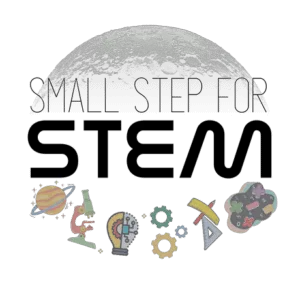
Sail Away with Soap: Build a soap-powered boat

Surface tension can be challenging to explain, but it’s really easy to demonstrate!
The Soap-Powered Boat STEM experiment demonstrates how the surface tension of water can be disrupted using the power of dishwashing liquid. The dishwashing liquid reduces the surface tension at the back of the boat, and the stronger surface tension at the front of the boat pulls and propels the boat forward.
Let’s get sailing!

How to make the Soap-Powered Boat experiment
Supplies you will need.
For this experiment, you’ll need:
- A small leaf
- A large tray of water

Before you start
We found that we had to use a new leaf each time we wanted to do the experiment, otherwise it wouldn’t work properly.
Instructions
Here is how to do this experiment with your child:
Step 1: Cut a small notch in the leaf
In the back of the leaf, cut a small notch (see picture). This is where we will add the dishwashing liquid.
We chose to cut the notch at the heaviest point of the leaf, where the stem is.

Step 2: Add dishwashing liquid to the boat
Use your pipette or dropper to gather some dishwashing liquid.
In the notch of the leaf, add a small drop of the soap and watch your boat take off!
Here are some extension activities, if you want to keep the fun going:
- Time the boat to see how fast it makes it across the water (turns it into a math experiment!)
- Measure the distance the boat travels (also turns it into a math experiment!)

The STEM behind the Soap-Powered Boat experiment
This experiment teaches:
Surface tension
Observation, cause-and-effect, how it works.
Water molecules are polar (oppositely charged) and therefore very attracted to other water molecules. That attraction causes a high surface tension in our container of water.
Dishwashing detergent has two ends, one of which is polar and the other is hydrophobic (water-hating). That polar end is attracted to the polar water molecules, and that reduces the surface tension.
So when we add soap to the back of the boat, it reduces the surface tension there. The stronger surface tension at the front of the boat pulls it forward, propelling the boat.
We can demonstrate surface tension by observing how the soap affects the boat’s movement.
The water’s surface acts like a stretchy skin due to surface tension. When soap is added, it breaks this “skin” at the back of the boat, where we cut the small notch and added the soap.
This imbalance in surface tension creates a force that propels the boat forward. By experimenting with different amounts of soap and boat designs, kids can visually see how surface tension influences the boat’s behavior.
Have your child make some observations about the boat:
- How did the dishwashing liquid affect the boat?
- Did the shape affect the boat’s speed? (if you made multiple boats to compare to one another)
- Why did we place the dishwashing liquid at the back of the boat? What would have happened if we placed it in front of the boat instead?
Making observations about the experiment helps to solidify the lesson!
Kids can observe cause and effect through this experiment by changing something in the experiment (adding dish detergent) and watching how that affects the boat.
Cause-and-effect thinking empowers children to make sense of their world, learn from their experiences, and develop problem-solving abilities.
More experiments about surface tension to try out with your child
- Magic Milk Science Experiment
H2-Oh My! A holey bottle that will not leak!
Related experiments
Fireworks Indoors? Explore surface tension with a milky fireworks show!
Here in the United States, we're getting ready to celebrate the Fourth of July. That means it's time to get patriotic with our STEM experiments! Magic Milk shows how dish soap separates the fat...
If you want to play a little practical joke on someone, I may just have the thing for you. This experiment involves piercing small holes in a bottle of water. If we open the cap and allow air to...
Soap powered boats
Make soap powered boats and learn how soap affects the way water molecules hold onto each other.
Make boats that race across water, powered by soap.
ExpeRiment with different liquids to see if they produce the same effect.
Learn how soap affects the way water molecules hold onto each other.
About this activity
Comedian Rufus Hound and his son Alby make soap powered boats and learn how soap affects the way water molecules hold onto each other.
Rufus and Alby do a science magic trick with some pepper (or oregano, if that’s your flavour), washing up liquid and water. Watch the flakes shoot across the water at the touch of a finger. They experiment with different liquids, investigating how substances around the house affect the surface of water. The dramatic effect you see is because the soap weakens the pull that water molecules have on each other. As a result, as the soap spreads over the surface of the water, the water is able to pull away, taking the oregano or pepper with it.
This amazing trick can be used to make a great activity. Cut a boat shape out of a drinks carton, with a little space at the back (for the ‘engine’). When you add a drop of soap in the hole, it pushes water out, backwards. The water moving out the back of the boat pushes it forward, just as hot gases coming out of the bottom of a rocket push it upwards.
Building closures from 9 December onwards
We are closed on the 10 and 12 December, along with other closures during the week starting 9 December, full details here.

COMMENTS
Soap powered boat explanation. If your boat is lightweight (not too many decorations), it should float and move forward quickly when you put the first drop of soap into the notch. The boat moves because the soap alters the water's surface tension. Water molecules (the tiny little pieces of water) tend to stick to one another (cohesion).
Explanation: You should have seen the paper boat scoot across the surface of the water, much like it was afraid of what the soap was doing to the surface. It's true. The paper boat is being held on the surface of the water, and that surface is weakening. Here's what I mean: Water has a strong surface to it, called "surface tension."
The soap reduces the surface tension of the water around it. You can use cohesion to make a boat powered by surface tension. The placement of the soap in the small notch at the back of the boat means that the only way for the soap to disperse is by moving out the back, causing the boat to move across the water.
Fun Surface Tension Experiments. Exploring surface tension through hands-on experiments offers an engaging way for kids to discover the fascinating properties of liquids. From observing the mesmerizing movement of a soap-powered boat to experimenting with other everyday materials, these activities not only spark curiosity but also lay the foundation for understanding fundamental scientific ...
The movement of the soap powered boat can be explained by a combination of three principles. All liquids have surface tension along the surface of a liquid, caused by intermolecular forces within the liquid pulling liquid molecules together. ... To repeat the experiment you may have to get clean water without detergent so that the surface ...
Trim the bread clip into the shape of a boat's hull - make sure the back of the boat is where the notch in the clip is. You may want an adult to help you with this step. If you don't have a bread clip, cut out a boat shape (like a pentagon) from a notecard and make a notch in the back of the boat. Fill a bowl with water from the tap.
The explanation of a soap-powered boat gliding across the water calls upon your understanding of surface tension. It's a force that occurs at the surface of water as the water molecules cling together, creating a tight barrier. ... "Engaging in hands-on experiments like the soap boat allows you to witness the wonders of science in real-time ...
water surface tension behind the boat, causing the water (and the boat) to move forwards. SOAP-POWERED BOAT 1. Using the boat template provided, cut out a simple boat from a clean milk carton or Styrofoam. 2. Cut a small notch at the back of the boat, in the middle of the rear edge.˚ 3. Fill a sink, bathtub, large bowl, or casserole dish with ...
The Soap-Powered Boat STEM experiment demonstrates how the surface tension of water can be disrupted using the power of dishwashing liquid. The dishwashing liquid reduces the surface tension at the back of the boat, and the stronger surface tension at the front of the boat pulls and propels the boat forward. Let's get sailing!
Make boats that race across water, powered by soap. ExpeRiment with different liquids to see if they produce the same effect. ... Cut a boat shape out of a drinks carton, with a little space at the back (for the 'engine'). When you add a drop of soap in the hole, it pushes water out, backwards. The water moving out the back of the boat ...